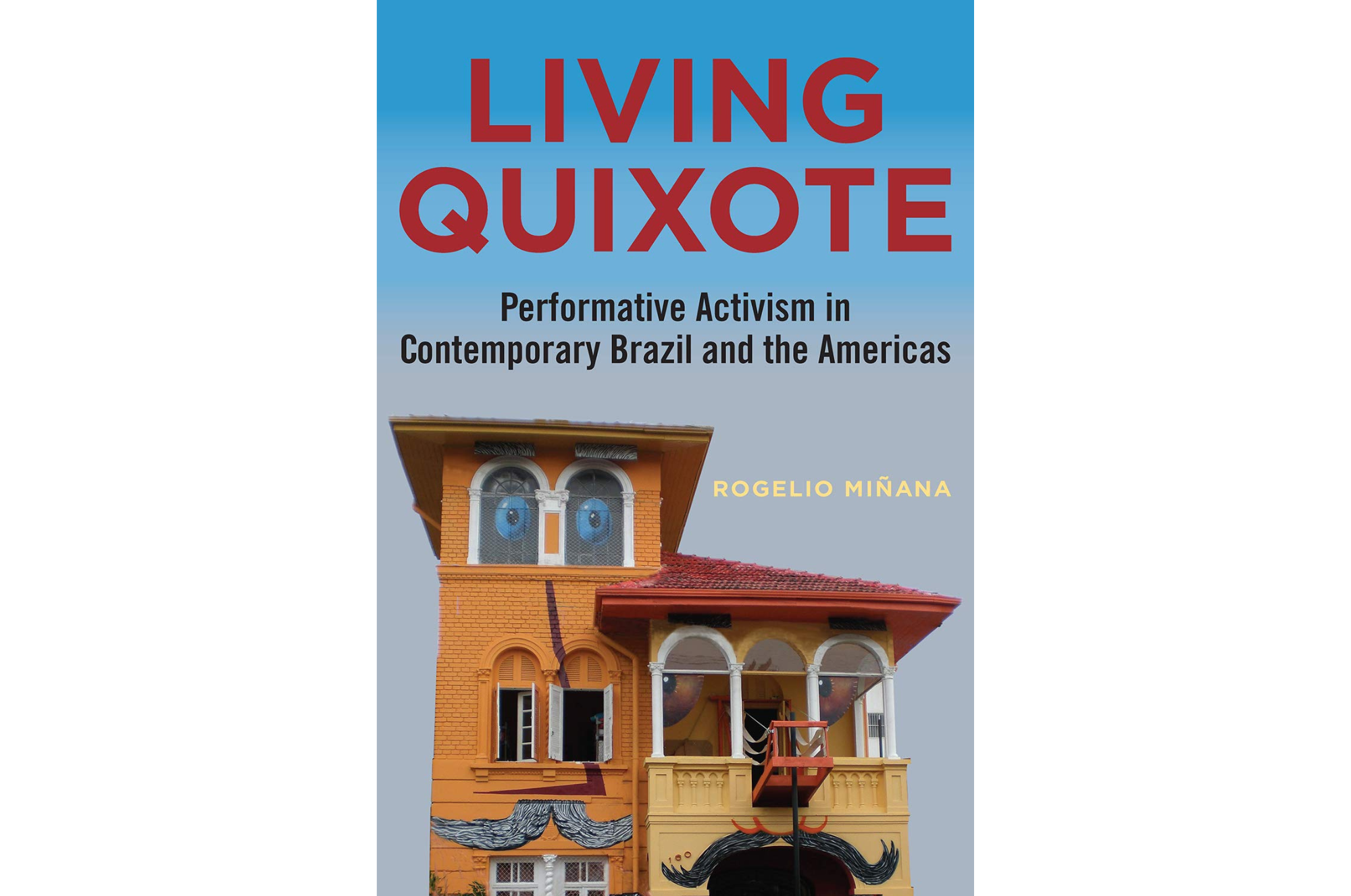In the early 17th century classic The Ingenious Hidalgo Don Quixote de la Mancha there is an episode where a young Muslim woman, Lela Zoraida, escapes her life of luxurious captivity by running off to Spain with some Christian soldiers. She is doing this because a Christian slave woman had told her the tale of the Virgin Mary, known to the young woman as Lela Marien. It is Zoraida’s dream to go to a Christian land and marry a Christian husband. In the tale of Zoraida, Cervantes tells us a story within his story and demonstrates the power of words. By hearing about the Virgin Mary, Lela Zoraida wants to exchange her Muslim existence for a Christian one—a desire she acts upon.
This is the point Rogelio Miñana is making in his book Living Quixote: Performative Activism in Contemporary Brazil and the Americas. His point is a simple but powerful one: that stories and words, especially the naming and renaming of events and concepts and people, can change lives.
As a Cervantes scholar, Miñana became fascinated with the use of the Don Quixote story among activist theaters and other grassroots social organizations in Brazil. Ranging from a re-entry program for youth offenders to projects working with drug-addicted children and street kids, the story of the ingenious hidalgo was and is being used to help marginalized people give voice to themselves.
We don’t think about it much, but Alonso Quijano, an old, impoverished hidalgo, imagines himself as the great Don Quixote, righter of wrongs. Thus, by taking on a new name, he creates himself in the image he wants for his life. This transition, and the power behind it, is what attracts these Brazilian reformers to Don Quixote. Their belief is that a person, by changing how they name and look at themselves, changes their lives.
The Quixote projects described in the book change lives by means of projects that range from theater performances to street performance to visual art. All these undertakings are focused on the liberating tale of the idealist Don. Traditionally, interpreters have seen the tales about the Man of La Mancha as either pure romance or biting sarcasm, but is there a third way? Yes, there is. It is a way in which living Quixote—by bringing his story into your life and embodying it in yourself and your dreams—creates an existential understanding of the meaning of the 1605 classic. Seeing how Quijano turns himself into Quixote gives the children and youth involved in these projects a role model for how they can change their lives.
Miñana calls this performative activism. The idea that by giving yourself a new identity to perform you can change and redirect your life. The use of the arts to do this is called artivism, which is activism through art at the interpersonal and community level. We are not talking about grand endeavors such as building schools or stemming violent crime but local endeavors such as getting kids off the street long enough for them to sort their lives out, long enough for them to be in a play that allows them to see themselves as actors in and writers of their own lives. The idea behind this work is that people, especially the underserved and marginalized, need an opportunity to see themselves as other than criminals or victims. This kind of artivism allows these youth and children to see themselves as William Ernest Henly saw himself.
It matters not how strait the gate,
How charged with punishments the scroll,
I am the master of my fate,
I am the captain of my soul.
Although the outcomes of Quixote-inspired activism are difficult to assess—they don’t lead to new legislation or the end of childhood poverty—they do reflect the truth of the following story.
A little child is walking down the beach, throwing stranded starfish back into the water. An adult says, “No matter what you do, you’re not going to make a difference.” The child responds, throwing a starfish back into the water, “Well, it made a difference to that one.”
This is a book intended for many audiences: the historian or social scientist looking for perspectives on the Brazilian Autumn of 2013, the humanities scholar looking for ways in which to apply their work or specialty to their surrounding community, the theater aficionado looking for ways in which theater can be used within their community, or the everyday reader hoping to see how everyday people are trying to change their worlds.
Living Quixote: Performative Activism in Contemporary Brazil and the Americas
By Rogelio Miñana
Vanderbilt University Press
Published in 2020
250 Pages

Stacey E. Ake, PhD, PhD is an Associate Teaching Professor of Philosophy in Drexel’s English & Philosophy Department. Her interests include existentialism, semiotics, biosemiotics, science and religion as well as 19th Century Continental Philosophy, particularly Kierkegaard. She spent 5 years at the Kierkegaard Research Center in Copenhagen, Denmark. She also worked for two years as editor of the online journal published by the Metanexus Institute for Religion and Science. She lives in West Philadelphia.
